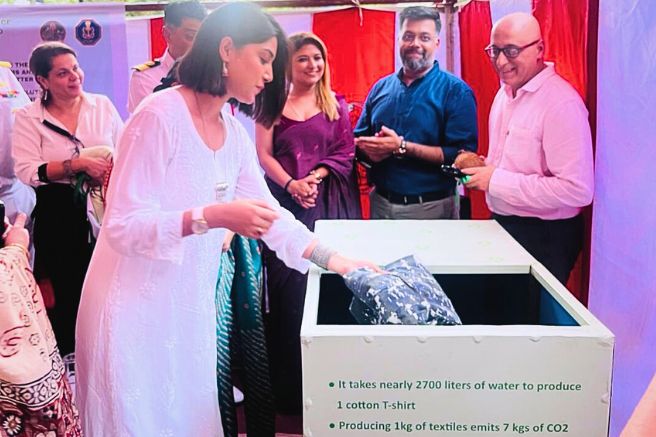Our commitment to circularity

Here are some quick facts:
92 million tonnes of textiles waste is produced every year. Of the 100 billion garments produced each year, 92 million tonnes end up in landfills. To put things in perspective, this means that the equivalent of a rubbish truck full of clothes ends up on landfill sites every second. If the trend continues, the number of fast fashion waste is expected to soar up to 134 million tonnes a year by the end of the decade. 87% of the materials and fibers used to make clothing will end up in either incinerators or landfills. Only 20% of discarded textiles are collected. Only 1% of clothes will get recycled into new garments.
According to studies, 85% percent of all textiles are going directly into landfills rather than being recycled or reused. This is a huge problem because natural textiles biodegrade in landfills, producing CO2 and methane emissions which contribute to climate change; while synthetic materials do not biodegrade and instead stay forever in landfills.
Solving this problem would require all textiles to be collected and diverted from the waste stream. This is a simple solution in theory, however the processes required to achieve it are complex. It requires the consolidated efforts of numerous stakeholder groups and millions of citizens.
Adapting to the principles of circular economy is one way to reduce the fashion industry’s impact on our planet. In order to achieve this systemic transformation, our aim is to bring all the stakeholders (entrepreneurs, waste workers, brands, MSMEs, academic institutes etc.) of the fashion ecosystem together on one platform. There is an increased need for post-consumer textile diversion, reuse, recycling and recovery across the value chain and stakeholders need to recognize that making the transition to a circular economy is a fundamental pathway to support the world’s climate and biodiversity targets. While there are circular initiatives taking place, much of the work is centralized and happening independently. Over the years, this approach has been proven to be inefficient, as it often leads to duplication of efforts and resource competition. As seen across the world, the most effective route to accelerate meaningful change, big or small, is through collective action. Our aim is to connect individual groups toward a common vision of establishing a circular and regenerative system in the fashion industry.
What Responsible Fashion campaign focuses on:
Reviving Fashion with a purpose – Globally, it’s clear that collective action is the most effective way to drive meaningful change, whether big or small. Our goal is to unite various groups around a shared vision of creating a circular and regenerative system within the fashion industry. We advocate for a mindset where fashion is not about unnecessary disposal but rather about redesigning, recovering, and recycling within a thoughtful circular economy.


How we can do this?
To promote circular fashion, we focus on the following principles to create a more responsible fashion industry.
THE 5Rs OF FASHION
There are many ways to reduce your fashion footprint, beyond the 5R’s of Reduce, Reuse, Recycle.




